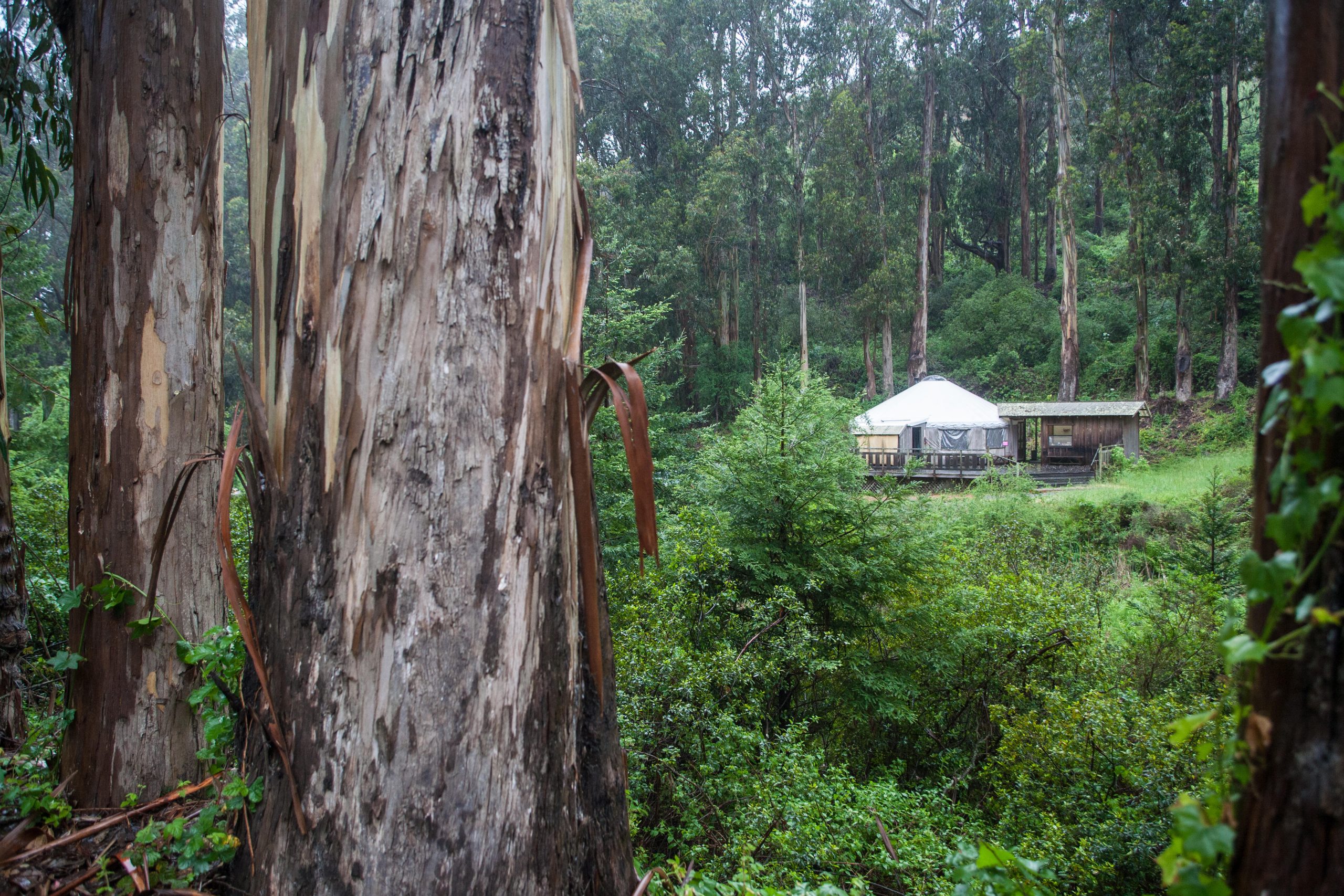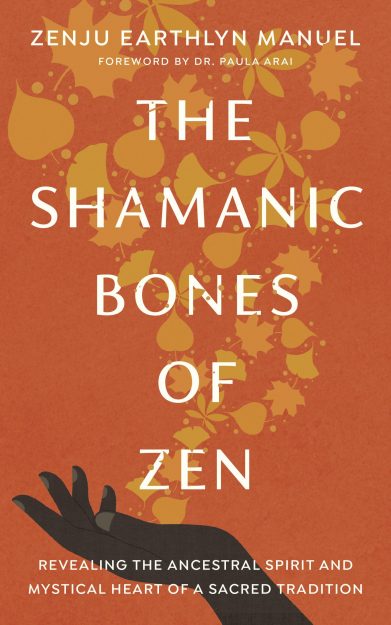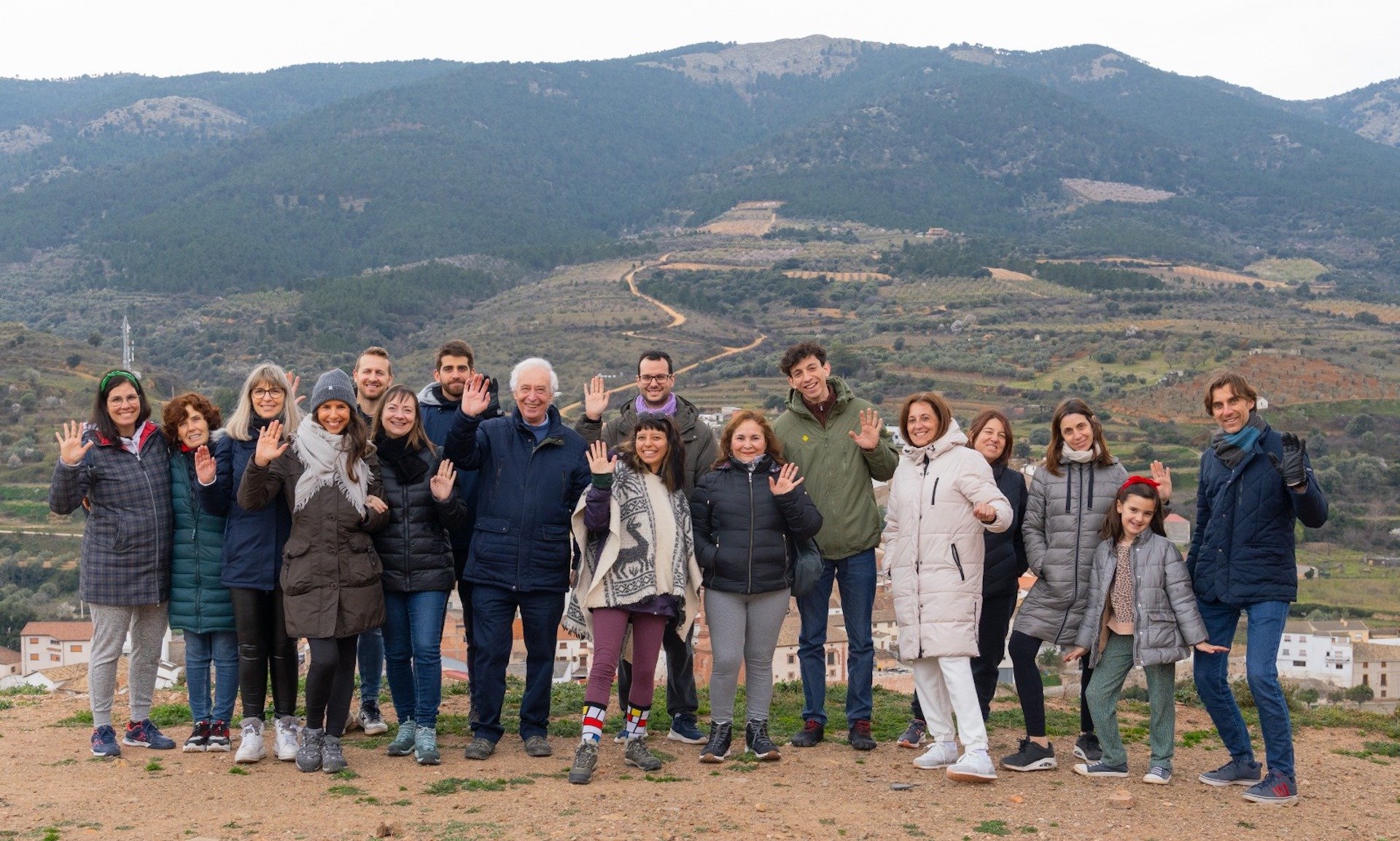Guidelines for Entering, Abiding, and Departing Long Meditation Retreats and Sesshins
A Zen priest offers helpful suggestions for seamlessly transitioning between daily life and spiritual sojourns. The post Guidelines for Entering, Abiding, and Departing Long Meditation Retreats and Sesshins appeared first on Tricycle: The Buddhist Review.

A Zen priest offers helpful suggestions for seamlessly transitioning between daily life and spiritual sojourns.
By Zenju Earthlyn Manuel Jul 02, 2025 Green Gulch Farm, also known as Green Dragon Temple (Soryu-ji), near Muir Beach, San Francisco, California. | Image via Paul Quayle / Alamy Stock Photo
Green Gulch Farm, also known as Green Dragon Temple (Soryu-ji), near Muir Beach, San Francisco, California. | Image via Paul Quayle / Alamy Stock PhotoAdjustments can be made if the retreat is online, including online posture and appropriate environment around the computer, dress, and state of mind.
Many ask, “How do I enter into a silent meditation ritual/retreat and then re-engage the world upon departure?” Buddhist retreats are not of the “spa” nature but more of a shamanic ritual with deep work within and without. Due to the shamanic effects of meditation, I have shared these guidelines for entering, participating, and departing rituals at home or at retreat centers. The silence will expand the territory of your life and may align you with your breath and perhaps allow life to unfold without tampering with it for a day, week, month, or however long your journey of engaging your mind and body. Eventually, retreats will be seamless—you come and you go. Also retreats will become seamless between your life and the scheduled retreats—just another day. But here are a few suggestions you can adjust to your life:
• A week to two weeks prior to the time of your retreat, go to bed early, rise early, sit, eat less (eat mostly green vegetables and brown or forbidden rice, and consume less sugar, salt, etc.)
• Drink calming teas such as tulsi (holy basil).
• Reduce or eliminate alcoholic and caffeinated drinks. Discuss the use of cannabis or other medications with your practice leader as to whether or not it will interfere with your sit. Take your usual medications and do not expect to be cured through meditation.
• Read less; view less TV (news, movies, etc.); lessen phone, email, and social media use; and reduce work and contact with others. Less, less, less. . . .
• Rest, rest, and more rest. Do not go to retreat to rest. Catch up on your sleep so that you are awake for the ceremony. Come energized and do not look for the retreat to energize you.
• Walk more than usual to move angst through the body.
• Bathe more often.
• Refrain from any serious conversations or dialogues that need processing but cannot be completed before your retreat.
Keep everything to bare necessities.
• Let your friends and family know you are gifting yourself with silence and express gratitude for how they have supported you thus far in your journey of life. You want them to feel you are taking them with you in your heart and that it is for them as well—the family, the community, and the world at large.
• If you are driving to the retreat or have to drive on the days of your silence, no music, no news, and no conversation if possible.
• Put down all books you are reading (including spiritual books) and all writing (including journaling).
• Let go of projects you are working on at least three days in advance.
• Arrange to have a day off before and a day off after the retreat if possible.
• Arrange for someone you really trust to sit with children, elders, ill family members, and/or pets or take care of plants, bills, and anything that needs taking care of in your absence.
• Do not bring a lot of belongings from home, especially things that might remind you to “do something.” Keep everything to bare necessities. Simple. Just a cell phone for emergency calls only. Leave the iPad and computer if you can.
• When your retreat starts, take in each moment as the retreat and not see yourself as sitting for a whole day, week, month, or however long your retreat is. Take in each moment of the retreat as it reveals the true seamlessness of life. No matter what relative time has been set, it is an infinite experience.
• See the retreat as an extension of the life you are living right now, as a continuum, no different, just one day breathing and seeing, walking, eating . . . then another day, doing the same. Seeing the mundane life as it is. Without toys. Possibly the monotony will disappear and be replaced with insight and wisdom.
• Reduce your portions of food; much is not needed while sitting still. Avoid fasting unless your retreat calls for such and the leader has recommended it.
• Congratulate yourself for taking time out of your life to commit to an act of love for yourself. Everyone around will receive such love.
• Carry an inner smile. Laugh at the mind. Let thoughts arise without stopping to engage them.
• Allow the schedule to be that which you fall back into freedom, away from your daily life. You do not have to do anything but let your body settle back into the time you are giving it to pause.
• Let the politics of life go for this time. We who believe in freedom can rest and justice will be done with a well and rested body and mind.
• Enjoy being a sleuth in the mystery of your life.
• While retreating, you have an opportunity to cease harming, worry, shift habits, and behavior. You can simply witness your life as you move through each moment.
Enjoy being a sleuth in the mystery of your life.
• Express your concerns or any abuses in a spiritual discussion with a spiritual companion or teacher. If no one is available, write your concerns down until you can speak with someone who can provide appropriate guidance. Avoid gossip or talking behind someone’s back.
• Let the retreat leaders know if you are struggling and need help. Let them know of any harm that is coming toward you based on race, sexuality, or gender of any kind. Don’t leave without notifying them. Don’t expect resolution. Expect that everyone is coming with an edge or with some kind of suffering, including the teachers.
• Competing with other retreatants will rob you of a beautiful respite.
• Look out into the open land, sky, or ocean and see it as your life—vast, open, empty of clutter (an image you can carry inside you).
• Cry if you must. Cry if you can.
• Let go and breathe.
• Congratulate yourself again.
• Let go of insights that appeared during your retreat. They will return when you need them.
• Keep the experience to yourself for a while. Let the cooking of your life settle. Say to your friends, “I gave myself a wonderful gift and I am still being with it.”
• Let your loved ones know you care about what happened while you were away, but you would like to talk about it the next day if it’s not an emergency.
• Nourish yourself like you would a newborn.
• Try not to spend time judging your experience—good or bad, successful or not.
• Continue to sit and settle your thinking on the breath. Build on the experience.
• Listen to everything. Listen to the sounds around you. Listen to those who are speaking. Listen longer than usual. Listen.
• Engage in activities that are in alignment with an experience of peace. Take nature walks. Bathe. Get a massage.
• Avoid parties or large gatherings for some time.
Keep the experience to yourself for a while. Let the cooking of your life settle.
• Avoid long conversations.
• Avoid returning to work on the day the retreat ends and the day after if possible.
• Once you return to work, set the timer on your cell phone (or computer) to sound every thirty minutes to remind you of the breath and experience of the retreat.
• Set three times of the day you will answer emails and return calls instead of every time you receive a message.
• Let your coworkers know you are having a slow day (no need to say the reason unless you are compelled to).
• Live the teachings for some time and wait a while to speak to others about what you have learned. Consider how much you would share and for what reasons.
• Cherish every moment as you did in the silence—the difficult and the not so difficult.
♦
From The Shamanic Bones of Zen by Zenju Earthlyn Manuel. © 2022 by Zenju Earthlyn Manuel. Reprinted in arrangement with Shambhala Publications, Inc. Boulder, CO
![]()
Thank you for subscribing to Tricycle! As a nonprofit, we depend on readers like you to keep Buddhist teachings and practices widely available.
This article is only for Subscribers!
Subscribe now to read this article and get immediate access to everything else.
Already a subscriber? Log in.

 FrankLin
FrankLin 





























